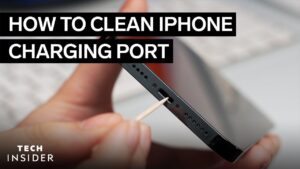What does a charger look like? Well, a charger is an essential device that keeps our electronic devices powered up and ready to use. It’s compact, sleek, and designed to be easily portable. Typically, a charger consists of a power brick with a plug on one end and a cable with a connector on the other. The connector varies depending on the device you want to charge, such as USB, Lightning, or USB-C. So, whether you’re searching for a replacement or trying to identify the charger you need, let’s explore what a charger looks like and uncover the details you should consider.
What Does a Charger Look Like?
When it comes to electronic devices, chargers play a vital role in keeping them powered up and ready for use. From smartphones and tablets to laptops and electric vehicles, chargers come in various shapes and sizes, designed to meet the specific power requirements of each device. In this article, we will explore the different types of chargers available in the market, their components, and how they function.
1. Wall Chargers
Wall chargers are the most common type of chargers found in households and offices. They are designed to be plugged directly into a wall outlet, providing a convenient way to charge your devices without the need for additional accessories. Here’s what you can expect a typical wall charger to look like:
- Rectangular or cube-shaped design
- Prongs or a cable for connecting to a wall outlet
- A port or ports for connecting the charging cable
- LED indicator lights to indicate charging status
Wall chargers come in different power ratings, measured in watts or amps, depending on the devices they are meant to charge. Some chargers also feature additional functionalities like fast charging or multiple ports to charge multiple devices simultaneously.
2. USB Chargers
USB chargers have become increasingly popular with the rise of smartphones and other USB-powered devices. They rely on the Universal Serial Bus (USB) standard to deliver power to compatible devices. USB chargers are often compact and portable, making them ideal for travel. Here’s what you can expect a typical USB charger to look like:
- Compact and lightweight design
- USB Type-A or USB Type-C ports for connecting the charging cable
- LED indicator lights to indicate charging status
USB chargers can vary in power output, with some supporting fast charging technologies like Qualcomm Quick Charge or USB Power Delivery (PD). These chargers can deliver higher power levels to charge devices quickly.
3. Wireless Chargers
Wireless chargers offer a cable-free charging solution, allowing you to charge compatible devices simply by placing them on a charging pad or stand. They use electromagnetic induction to transfer power from the charger to the device. Here’s what you can expect a typical wireless charger to look like:
- Flat or angled charging pad or stand
- LED indicator lights to indicate charging status
Wireless chargers are commonly used for smartphones, smartwatches, and other small electronic devices that support wireless charging. While they provide convenience, wireless chargers may have slower charging speeds compared to their wired counterparts.
4. Laptop Chargers
Laptop chargers, also known as AC adapters or power bricks, are specific to laptops and provide the necessary power to charge the battery and run the device. Laptop chargers are usually larger and bulkier than other types of chargers due to the higher power requirements of laptops. Here’s what you can expect a typical laptop charger to look like:
- Rectangular or block-shaped design
- A detachable cable for connecting to the laptop
- Prongs for connecting to a wall outlet
- LED indicator lights to indicate charging status
Laptop chargers come in different power ratings, usually specified in volts (V) and amps (A). It is essential to use the correct charger recommended by the laptop manufacturer to ensure compatibility and safe charging.
5. Electric Vehicle (EV) Chargers
With the increasing popularity of electric vehicles (EVs), specific chargers have been developed to meet their unique power requirements. EV chargers, also known as electric vehicle supply equipment (EVSE), allow EV owners to charge their vehicles at home or public charging stations. Here’s what you can expect a typical EV charger to look like:
- Rectangular or cylindrical design
- A cable or connector for connecting to the EV
- LED indicator lights or a display to indicate charging status
EV chargers provide different power levels, commonly categorized as Level 1, Level 2, and Level 3 (DC Fast Charging). Level 1 chargers use a standard household outlet, while Level 2 and Level 3 chargers require special installation and can charge the vehicle much faster.
In conclusion, chargers come in various forms and designs to meet the specific charging needs of different electronic devices. Whether it’s a wall charger, USB charger, wireless charger, laptop charger, or EV charger, each type serves a particular purpose. It’s essential to choose the right charger that matches your device’s power requirements to ensure efficient and safe charging. Always refer to the manufacturer’s recommendations for the best charger compatibility.
So You Want a Dodge Charger
Frequently Asked Questions
What does a charger look like?
A charger is a device used to supply power to rechargeable batteries or electronic devices. It typically consists of a power plug, a cable, and a connector that attaches to the device being charged. The appearance of a charger can vary depending on the type of device it is designed for.
Are chargers for different devices the same?
No, chargers for different devices can vary in their appearance and specifications. Chargers are designed to match the specific charging requirements of the device they are intended for. For example, a charger for a smartphone may have a different connector and power output compared to a charger for a laptop.
Can you give examples of different charger types?
Yes, there are various charger types available. Some common examples include:
- USB Chargers: These chargers often have a USB Type-A or USB Type-C connector, allowing them to be used with smartphones, tablets, and other USB-powered devices.
- Laptop Chargers: These chargers are specifically designed for laptops and usually have a larger power brick with a cable that connects to the laptop’s charging port.
- Wireless Chargers: These chargers use electromagnetic induction to transfer power wirelessly to compatible devices such as smartphones or smartwatches.
- Car Chargers: These chargers connect to a vehicle’s cigarette lighter socket and provide power to charge devices while on the go.
What are the key features of a charger?
The key features of a charger can vary depending on the device it is designed for. However, common features may include:
- Power Output: Chargers have a specific power rating measured in watts or amps, indicating how quickly they can charge a device.
- Connector Type: Chargers come with different types of connectors, such as USB, Lightning, USB-C, or proprietary connectors specific to a device or brand.
- Cable Length: The cable attached to the charger may vary in length, allowing for flexibility in charging distance.
- Charging Indicator: Some chargers have LED indicators or other displays to show the charging status.
Can chargers have different designs or colors?
Yes, chargers can come in different designs and colors. Manufacturers often offer chargers in various styles and colors to cater to personal preferences or to match the design aesthetic of the devices they are intended to charge. However, the functionality and compatibility of the charger remain the primary considerations.
Final Thoughts
A charger is a device used to replenish the battery of electronic devices. It typically consists of a power adapter that connects to an electrical outlet, with a cable and a connector on the other end that plugs into the device being charged. Chargers come in various shapes and sizes, depending on the type of device and manufacturer. They can be as simple as a small rectangular block with prongs or a sleek, compact design. Some chargers also include additional features like fast charging or wireless capabilities. In summary, a charger is an essential accessory for powering up electronic devices and ensuring they stay functional. So, what does a charger look like? It varies, but the common goal is to provide power efficiently and conveniently.



